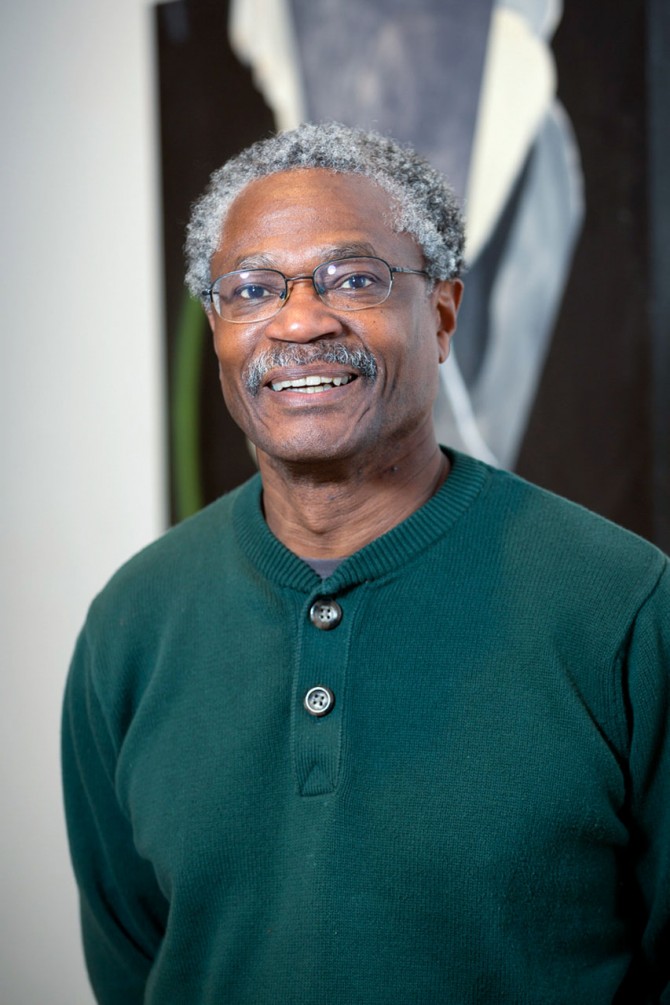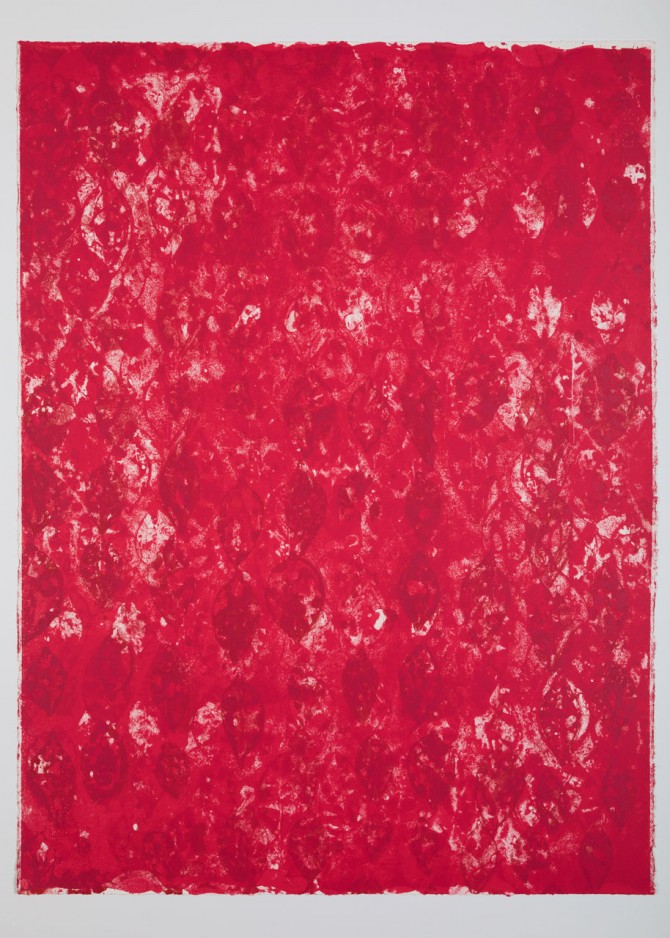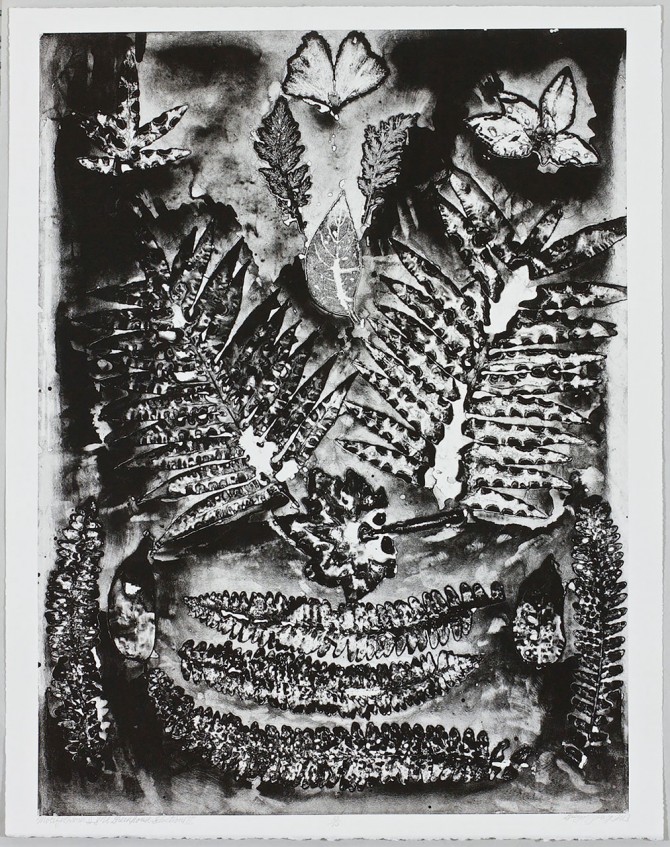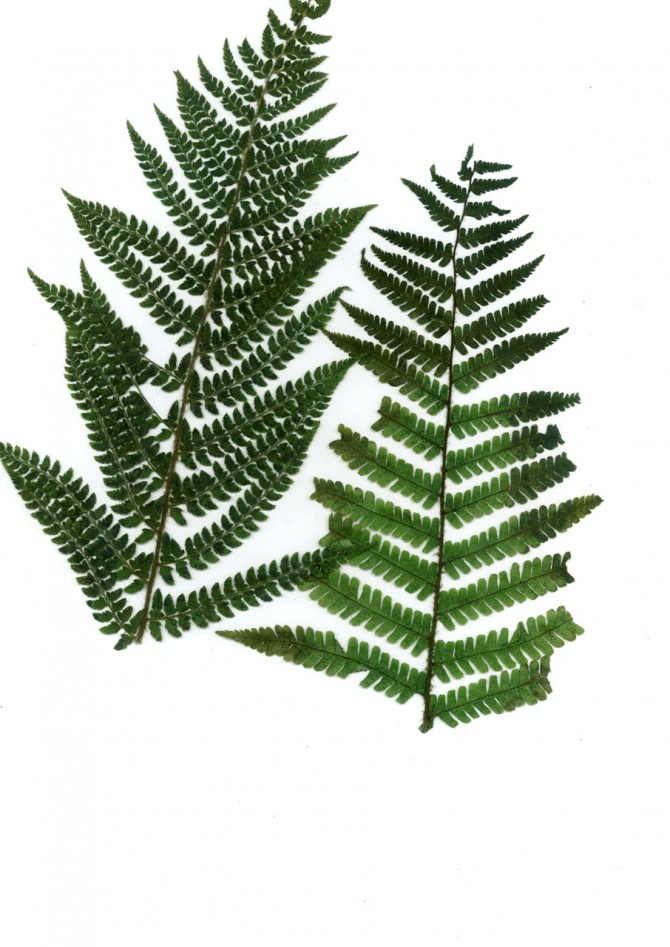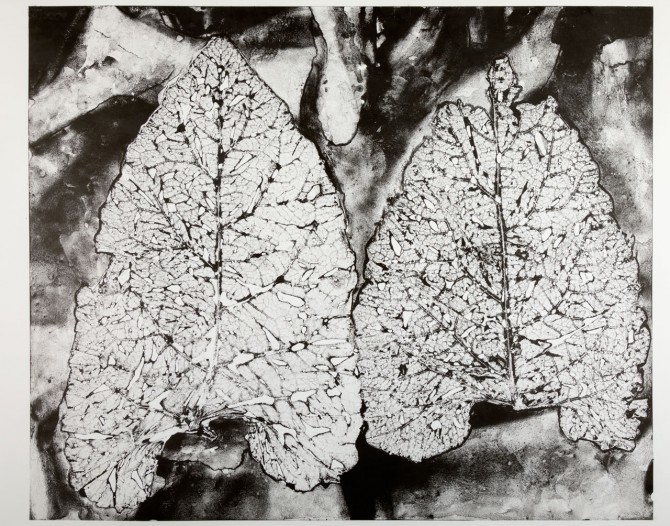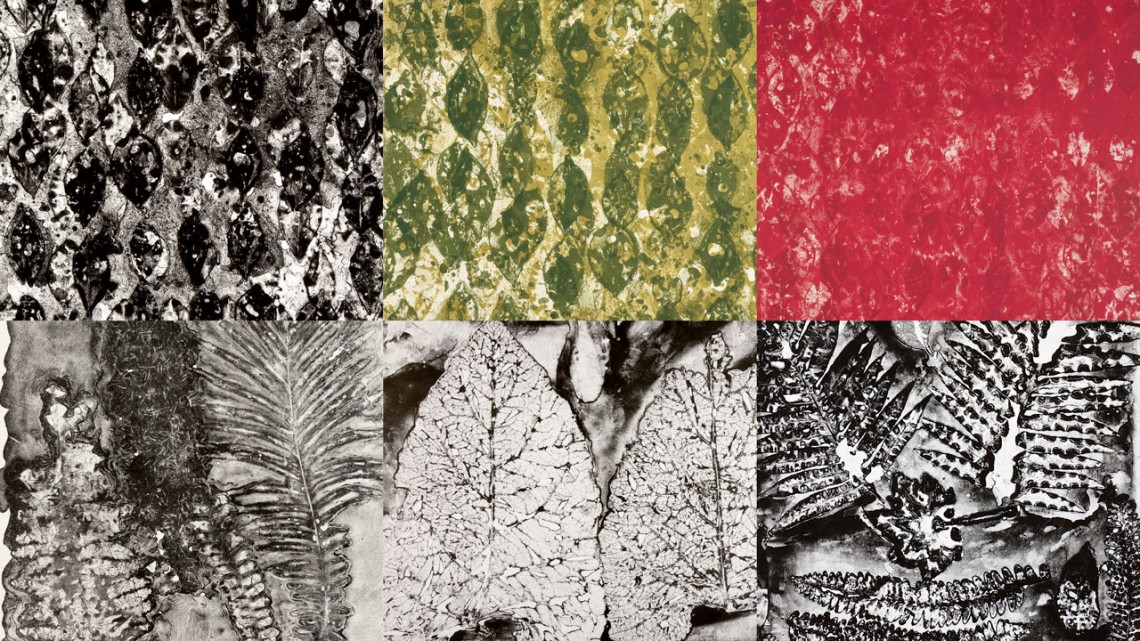
These details of prints by Greg Page, associate professor of art, showcase his innovative technique. The prints appear in “Motifs from the Global Backyard II.”
Greg Page: cultivating art in the global backyard
By Edith Fikes
When artist and art professor Greg Page traveled to Rome in 1999 and 2002 to teach in the Cornell in Rome program, he was struck by the ornamental motifs on the ancient buildings – laurel leaves, stylized flowers, fan-shaped clusters of petals. Back in Ithaca, New York, those motifs inspired him to create lithographs from the plants he grows in his own backyard.
An active gardener, Page has 40 perennial specimens, seven varieties of hosta, seven varieties of trees including apple and cherry, 11 varieties of ornamental grasses, raspberries, blackberries, elderberries and five types of bushes.
“My backyard serves as a place of research where I am given the opportunity to collaborate with the plants growing there in an endless cycle of investigation, design, regeneration and sustainability,” says Page, associate professor of art in the College of Architecture, Art and Planning.
His fascination with plants – and their documentation and systems of organization – has informed his 40-year career. A selection of work made with plants he’s collected from around the world makes up his final faculty show, “Motifs from the Global Backyard II,” ahead of his retirement in July. The show opened March 16 in Sibley Dome’s John Hartell Gallery and is now online, due to the COVID-19 pandemic.
The exhibition builds upon a body of work that extends back to 2002, when Page’s experiments with lithography yielded a process that allows the specimens he meticulously collects to make a direct impression of themselves on paper.
“I had an early interest in nature and plants and decided that art was a way for me to explore and investigate more deeply – to somehow get better at it, to know more,” Page says. “I see plants and gardens as a way of continually, and patiently, connecting with the world and sustaining myself and my practice.”
His interest in printmaking began in junior college in St. Louis, Missouri, in the 1970s. He went on to complete an MFA in printmaking at the University of Wisconsin, Madison, in 1977. Three years later, Page joined the faculty of Cornell’s Department of Art.
He eventually saw his printmaking practice, and his approach to teaching drawing and printmaking, dovetail with his interest in the natural sciences. Over decades, he has pursued collaborations with experts across campus, in the departments of entomology and microbiology and at the Cornell Plant Pathology Herbarium, among others.
“Collaborating with colleagues in so many disciplines – some dealing with insects, some with the body and the gut, some with fossils, and of course many that work with plants – has been endlessly helpful and inspiring for me and my students,” Page says. “Our work that spans decades now has been undoubtedly beneficial for my art practice, for teaching across disciplinary boundaries, and for people who enjoy seeing the outcome of an artistic interpretation of nature and the natural sciences.”
From 2002 to 2007, Page collected specimens, advanced his printmaking technique and developed a visual language that integrated plants, gardens and lithography. He dries the plants and rehydrates them in a tray of tusche, a greasy black liquid used in lithography. The plants are placed on a sheet of film used in plate lithography. Once the plant material dries, he removes it to reveal its impression.
In 2007, he presented his unique process and discussed his work at the annual Frontiers in Printmaking Conference at the Normal Editions Workshop, a nonprofit research facility at Illinois State University, where he would later build upon his series of prints as the Normal Editions 2013 artist-in-residence. That year, Page visited the Royal Botanic Gardens in Edinburgh, Scotland, to collect specimens and collaborate with Alastair Clark, assistant director of the Edinburgh Printmakers Studio. He also collected specimens from the Green House collections at Illinois State University and The Cornell Botanic Gardens.
Page installed the first of two “Motifs from the Global Backyard” exhibitions in the Bibliowicz Family Gallery, in Milstein Hall, in spring 2013. The show featured lithographs created from specimens collected from Edinburgh, the Cornell Botanic Gardens, Green House Collections at Illinois State University and his backyard.
Over the length of his career, Page has exhibited widely in the U.S. and internationally, including at the He Xiangning Art Museum in Shenzhen, China, and Gallery Ami & Kanoko in Osaka, Japan. His prints are included in permanent collections of the Brooklyn Museum of Art in New York; the Museum of Fine Arts in Houston, Texas; and the Museum of Fine Arts in San Francisco.
Page also was a member of the Southern Graphics Council for many years. He is a founding member of the Ink Shop Printmaking Center/Olive Branch Press in Ithaca.
In 2019, Page traveled while on sabbatical to Ireland to collect specimens from the National Botanic Gardens in Dublin. He also visited Black Church Print Studio, in Dublin, where he worked with director David McGinn, again expanding his body of work with many of the prints featured in “Motifs from the Global Backyard II.”
Page intends to return to Edinburgh, Dublin and other places to continue working with his technique. He see it as “an art form and mode of personal expression that forms a distinct relationship, like fossils, between plants and their documentation over time,” he says. “I plan to continue to learn and see that my printmaking practice and work emphasize the importance of sustainability and regeneration both in art and life.”
This article is adapted from “Page Exhibits ‘Motifs from the Global Backyard II,’ Reflects on Collaboration, Life, and 40 Years of Art Practice,” by Edith Fikes, staff writer for the College of Architecture, Art and Planning.
Media Contact
Get Cornell news delivered right to your inbox.
Subscribe